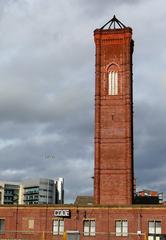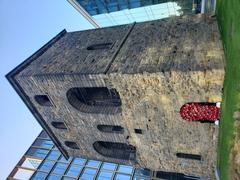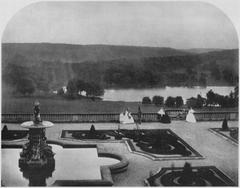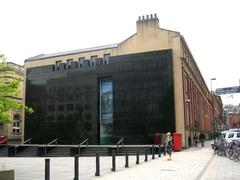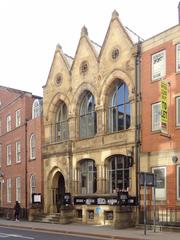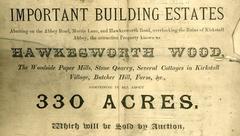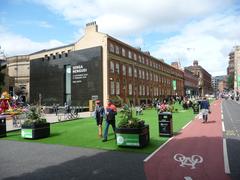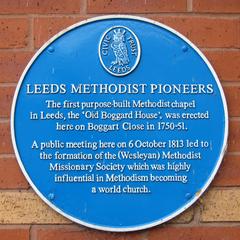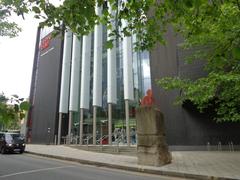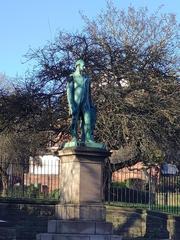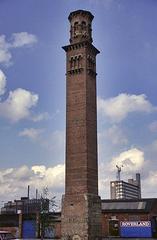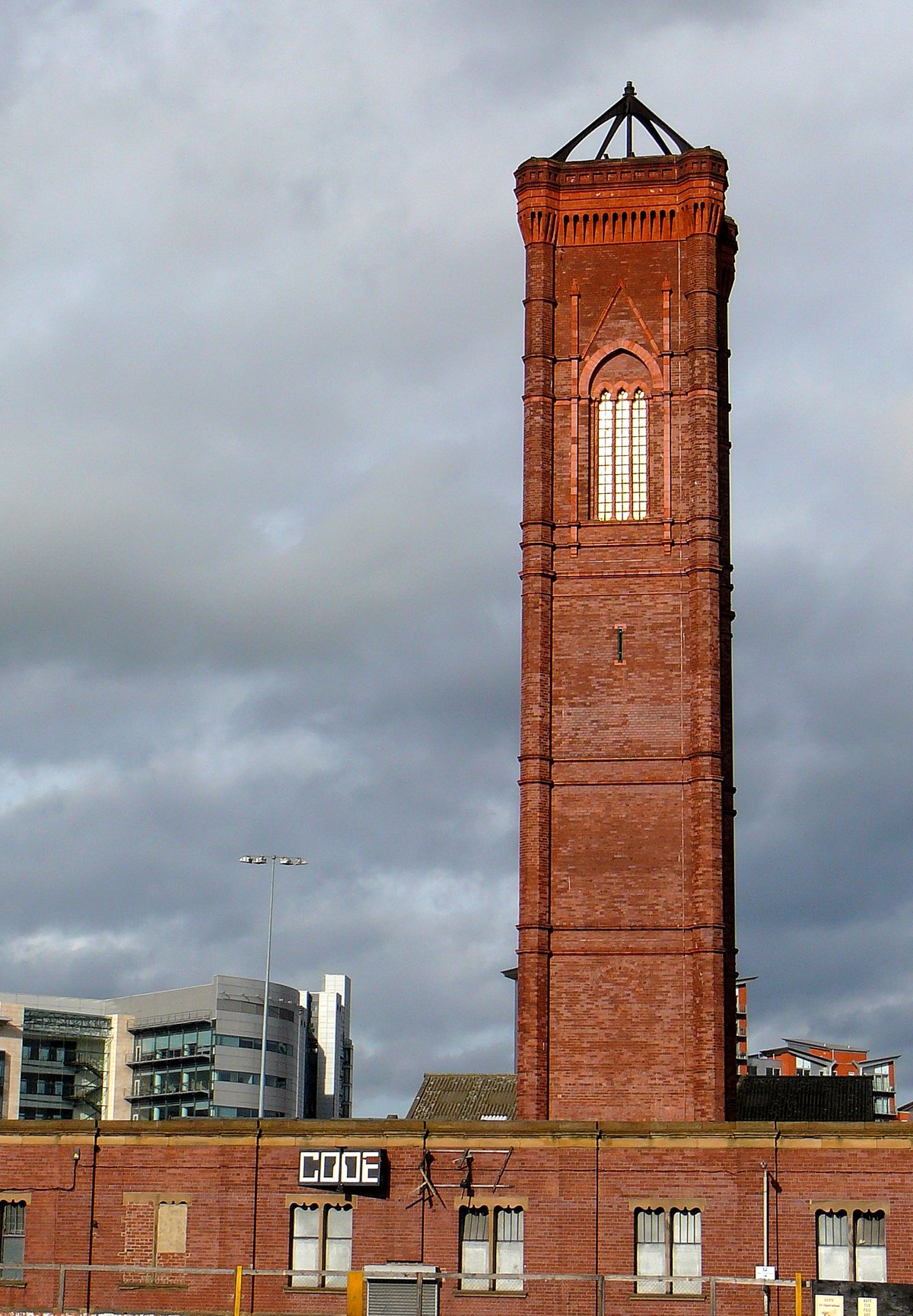
Tower Works, The Giotto Tower Dust Extraction Chimney
Tower Works and Giotto Tower Dust Extraction Chimney Leeds: Visiting Hours, Tickets, and Historical Sites Guide
Date: 14/06/2025
Introduction
Tower Works, nestled in the vibrant Holbeck district of Leeds, is a landmark that encapsulates Victorian industrial brilliance and Italian Renaissance artistry. Established in 1864 by Thomas Harding, the site was instrumental during Leeds’ textile boom, uniquely blending industrial function with architectural grandeur. Its iconic trio of Italianate towers—especially the Giotto Tower Dust Extraction Chimney, modeled after Florence’s famous campanile—stands as a symbol of the fusion of art and industry. Today, Tower Works is a focal point in the South Bank regeneration initiative and the Holbeck Urban Village conservation area. With free-access outdoor spaces, ornate Gothic brickwork, seasonal events, and excellent accessibility, Tower Works appeals to history buffs, architecture enthusiasts, and casual visitors alike. Amenities such as cafés, public seating, and step-free access further enhance the visitor experience. For comprehensive details about Tower Works’ history, architecture, and visitor opportunities, consult resources like the Jestico + Whiles Tower Works project, Tower Works South Bank, and Leeds-List’s architectural guide.
Contents
- Introduction
- Origins of Tower Works and the Giotto Tower
- Architectural Development and Conservation
- Significance in Leeds’ Architectural Landscape
- Visitor Information
- Events and Activities
- Visitor Experience
- Frequently Asked Questions (FAQs)
- Visual and Media Resources
- Related Articles
- Conclusion and Call to Action
Origins of Tower Works and the Giotto Tower Dust Extraction Chimney
Industrial Genesis and Vision
Founded in 1864 by Thomas Harding, Tower Works was designed to manufacture steel pins and carding tools vital to Leeds’ flourishing textile industry. Harding’s vision extended beyond mere utility—he sought to create a site that married industrial efficiency with architectural distinction, drawing inspiration from Italian Renaissance design (Jestico + Whiles).
The Iconic Italianate Towers
Tower Works is defined by its three signature towers, each inspired by celebrated Italian landmarks:
- Giotto Tower (Dust Extraction Chimney): Completed in 1899 and standing 40 meters tall, this Grade II* listed structure is a near-replica of Florence’s Giotto Campanile. It served as a state-of-the-art dust extraction chimney, featuring intricate Gothic and polychrome brickwork.
- Verona Tower: Modeled after the Torre dei Lamberti in Verona, this robust, square tower was completed in 1866 and also holds Grade II* listing.
- Little Chimney: Inspired by Tuscan medieval towers, this Grade II listed structure (built in 1919) embodies both function and austere Italianate style.
The towers functioned both as chimneys and as powerful visual statements, reflecting the Victorian drive to ennoble industry through art and architecture.
Architectural Development and Conservation
Construction and Materials
The towers feature high-quality red brick and elaborate detailing rare for industrial buildings of their time. The Giotto Tower, in particular, showcases decorative patterns and arched openings reminiscent of its Florentine namesake, adapted with local materials.
Decline and Renewal
The decline of Leeds’ textile trade in the 20th century led to Tower Works’ partial dereliction, with much of the original factory demolished. The three towers and sections of the perimeter wall, however, have survived as enduring monuments to Leeds’ industrial heritage.
Regeneration and Adaptive Reuse
Since the early 2000s, Tower Works has been central to the South Bank regeneration project. Restoration efforts have preserved the towers and integrated them into a thriving mixed-use development, which includes residential apartments, commercial spaces, and a public square. The former Engine House is being adapted as a creative workspace, strengthening the site’s role as a cultural and economic hub (Jestico + Whiles).
Significance in Leeds’ Architectural Landscape
Tower Works is a landmark of both architectural and historical importance. Its Italianate design, especially the Giotto Tower, has become an emblem of Leeds’ skyline. The successful integration of these structures into modern urban life has contributed significantly to the revitalization of the South Bank area (Leeds-List).
Visitor Information
Visiting Hours
Tower Works’ public spaces, including the squares and pedestrian routes, are open daily from 7:00 AM to 10:00 PM.
Tickets and Entry
There is no admission fee for the outdoor areas. Access to certain commercial amenities (such as the arthouse cinema or restaurants) may require tickets or reservations.
Guided Tours
Seasonal guided tours are available, particularly during heritage events. For current schedules, visit the official Tower Works project page or local tourism websites.
Accessibility
The site is equipped with step-free access, smooth pathways, and ramps. While internal access to the towers is not permitted, the public realm is accessible for visitors with mobility needs.
Travel Tips
- Getting There: Located near Globe Road, adjacent to the Leeds-Liverpool Canal, Tower Works is a 10-minute walk from Leeds railway station.
- Parking: Limited street parking is available; public transit is recommended.
- Nearby Attractions: Holbeck Urban Village, Leeds City Museum, Leeds Corn Exchange, and the canal towpath are all within easy reach.
Events and Activities
Tower Works hosts a vibrant calendar of cultural events, community markets, and seasonal festivals such as the Tower Works Street Festival at Mustard Wharf. These gatherings enliven the neighbourhood with music, food, and family-friendly entertainment.
Visitor Experience
Interpretive signage throughout the site enriches the visitor journey with historical and architectural context. Landscaped courtyards, public benches, and canal-side paths make for a relaxed and educational visit. The towers’ dramatic silhouettes and intricate detailing offer excellent photographic opportunities, especially at sunset.
Frequently Asked Questions (FAQs)
Q: What are the visiting hours for Tower Works?
A: Public spaces are open daily from 7:00 AM to 10:00 PM.
Q: Is there an entry fee?
A: No, access to outdoor areas is free. Some events or amenities may charge fees.
Q: Are guided tours available?
A: Yes, typically during heritage events. Check the official website for updates.
Q: Is Tower Works accessible for wheelchair users?
A: Yes, the site is designed with step-free access and smooth pathways.
Q: Can I take photographs at Tower Works?
A: Personal photography is allowed in public spaces. Commercial filming or photography requires prior permission.
Visual and Media Resources
View virtual tours, high-resolution images, and interactive maps on the Jestico + Whiles Tower Works project page and South Bank Leeds website.
Related Articles
Conclusion and Call to Action
Tower Works is a testament to Leeds’ ability to honor its industrial past while embracing a vibrant urban future. Whether you are captivated by Victorian architecture, enjoy community festivals, or simply want to explore a unique part of Leeds, Tower Works is a must-visit. Plan your trip, check for upcoming events, and download the Audiala app for curated tours and real-time updates. Follow @towerworks.leeds on social media for the latest news and activities.
Sources and Further Reading
- Jestico + Whiles Tower Works project
- Tower Works South Bank
- Richardsons – Tower Works scheme completes
- South Bank Leeds – The Engine House
- Leeds-List’s architectural guide
